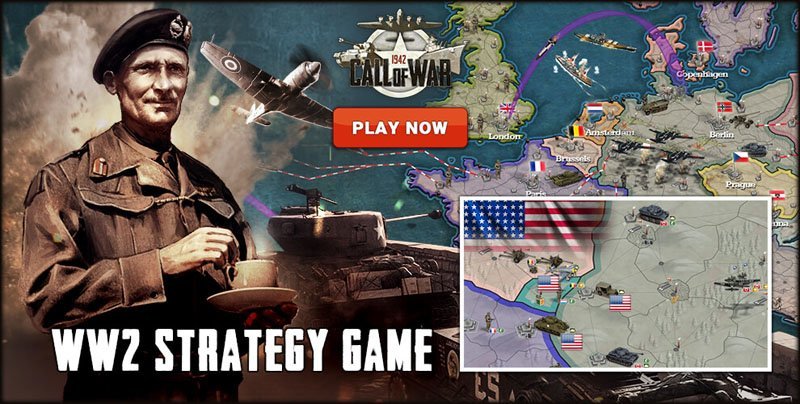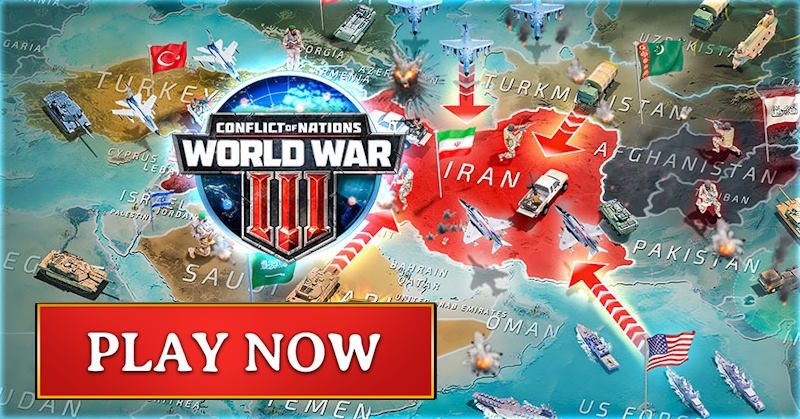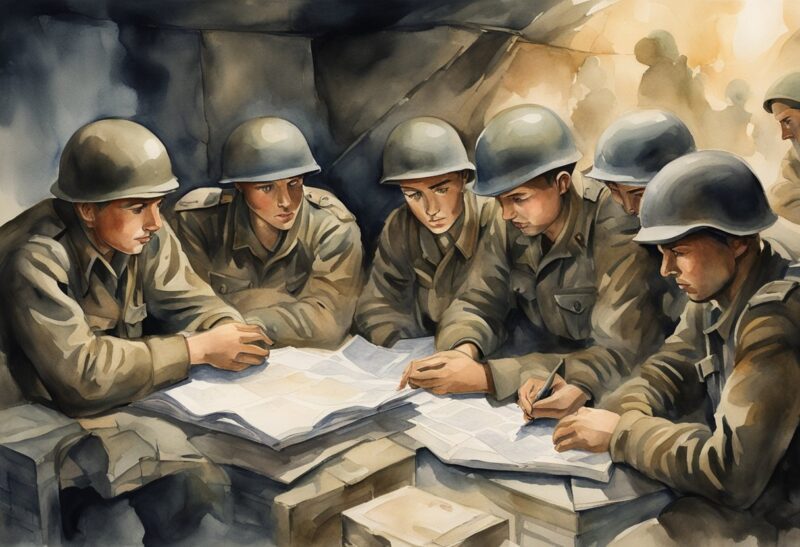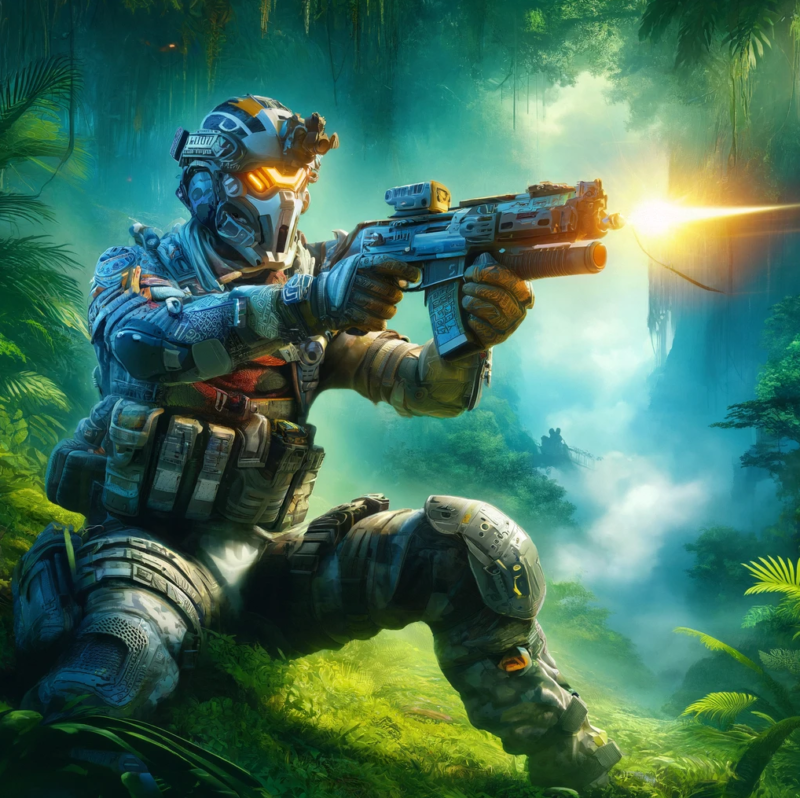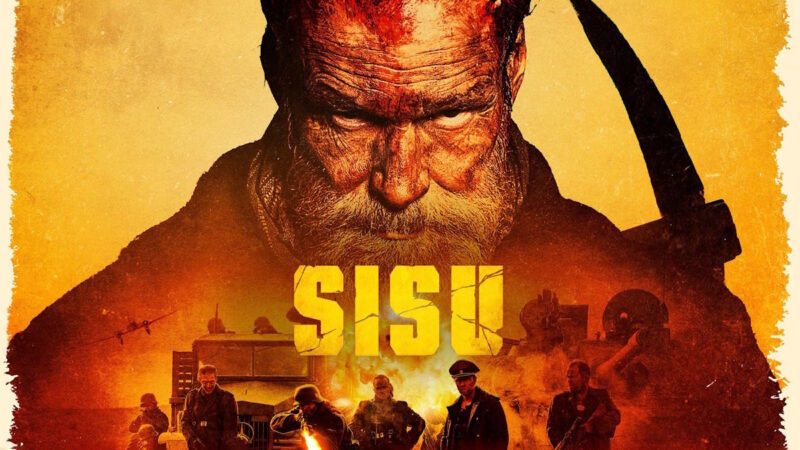Movie Review from A Bridge Too Far: Analyzing the 1977 War Epic.
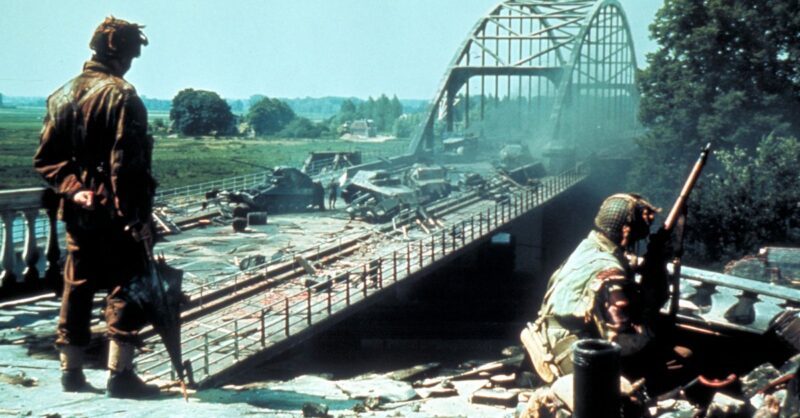
The War Movie ‘A Bridge Too Far’
Table of Contents
As a war movie enthusiast, I have always been captivated by films that manage to portray the complexity and intensity of battle. “A Bridge Too Far,” directed by Richard Attenborough in 1977, serves as a pinnacle example of epic cinema that aims to do just that.
This ambitious film takes on the arduous task of realistically depicting Operation Market Garden during World War II, famously known as one of the Allies’ most significant military missteps.
My interest in the film lies not only in its grand scale but also in its meticulous attention to detail and historically accurate portrayals.
With an ensemble cast of renowned actors, “A Bridge Too Far” offers an immersive experience into the strategic decisions, brave sacrifices, and unfortunate miscalculations that characterized this pivotal moment in history.
The film moves beyond mere storytelling; it becomes an extensive chronicle that invites me to examine the intricacies of war and its far-reaching consequences.
“A Bridge Too Far” is not just an arresting visual spectacle with outstanding performances; it is a testament to the enduring power of epic war movies to reflect on human conflict.
The film provides an opportunity for me to not only witness but also reflect upon the gravity of war, the valour of soldiers, and the unpredictable nature of military operations.
Through its portrayal of Operation Market Garden, this cinematic work encourages a thoughtful discussion on the lessons that history imparts through every meticulously crafted scene.
Background and Historical Context
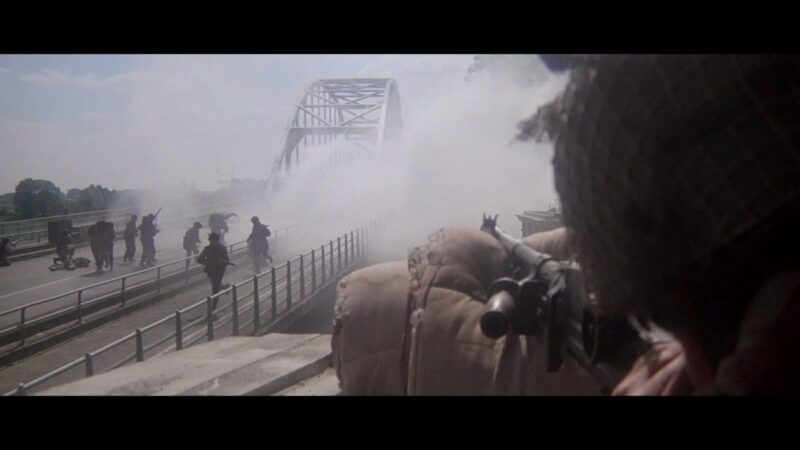
In discussing “A Bridge Too Far,” it’s crucial to consider both the historical event that serves as the film’s backdrop and the unique perspectives brought to the table by its creators.
Operation Market Garden and Its Portrayal
Operation Market Garden was a bold military endeavor during the Second World War, aiming to secure several bridges in the Netherlands and forge a path into Germany.
This strategic move by the Allies in September 1944 is accurately depicted in “A Bridge Too Far.”
My understanding of this operation’s portrayal in the film is that it doesn’t shy away from the harsh realities of war, emphasizing the ambition and subsequent failure of the Allied forces.
Filmmaker Vision
The vision of Richard Attenborough, the director, is evident throughout the film.
Along with Joseph E. Levine, the producer, and William Goldman, the screenwriter, Attenborough sought to create a film that was true to Cornelius Ryan’s historical book by the same name.
My interpretation is that Attenborough approached “A Bridge Too Far” with a dedication to authentic representation, not just of the battle scenes but also of the soldiers’ experiences, the strategic missteps, and the complexities of warfare.
Cast and Characters
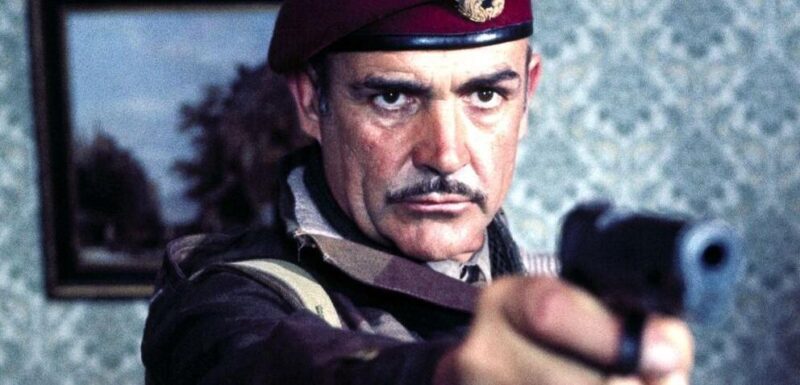
In “A Bridge Too Far,” the ensemble cast delivers an array of performances that bring to life the complex multinational operation of Market Garden.
Known for its star-studded lineup, the film features distinguished actors portraying soldiers and officers from different Allied and German forces who participated in this historic event.
American and British Representation
The film’s portrayal of the Allied forces is centered heavily on the American and British military.
Notably, Major General Robert Urquhart is given an empathetic portrayal by Sean Connery, whose performance captures the pressing urgency and the burden of command.
On the American front, James Caan as Sergeant Eddie Dohun stands out, emphasizing the valor and quick decision-making of individual soldiers.
Edward Fox plays Lieutenant-General Horrocks, illustrating the boldness and strategic acumen of the British corps, while Anthony Hopkins personifies Lieutenant Colonel John Frost, showcasing leadership and resilience.
Key Performances
Among the key performances, Michael Caine offers a significant depiction of Lieutenant Colonel J.O.E Vandeleur, reflecting the determination and challenges faced by leaders on the ground.
Ryan O’Neal takes on the role of Brigadier General James Gavin, exemplifying youthful command and the personal toll of war.
The German perspective is not neglected, with Maximilian Schell as Lieutenant General Bittrich, providing insight into the strategy and humaneness on the opposing side.
The quiet intensity of Gene Hackman as Major General Stanisław Sosabowski calls attention to the contributions and trials of the Polish airborne forces in the operation.
Dirk Bogarde portrays Lieutenant General Browning, underlining the high-level decisions that shaped the outcome of Market Garden.
Technical Aspects
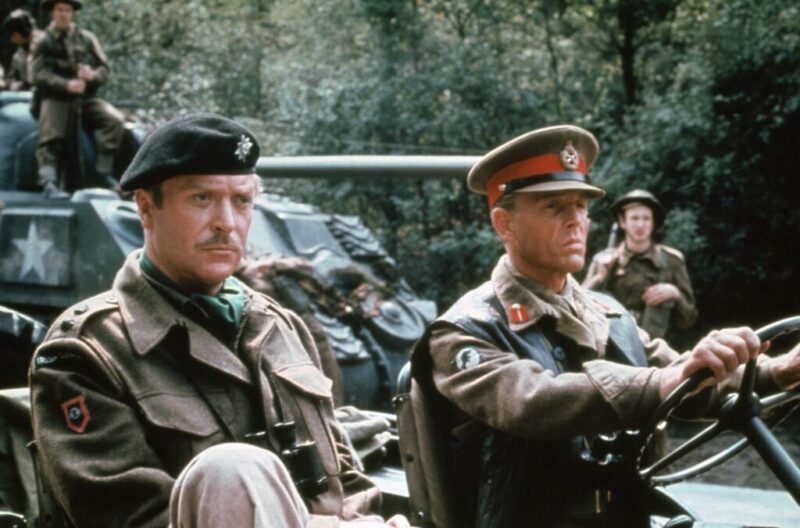
In my review of “A Bridge too Far” (1977), I focus on the film’s technical brilliance, particularly in its cinematography and musical score. These components significantly contribute to the authenticity and emotional impact of this historical war drama.
Cinematography of War
The cinematography in “A Bridge too Far” is compelling, capturing the vastness of Operation Market Garden in a manner that’s both visually striking and narratively effective.
My observation of the camera work reveals a meticulous use of wide shots that demonstrate the scale of the military operation, a feature crucial in war films to depict the scope of battlefields.
Close-up shots are employed to capture the poignant emotions of soldiers, bringing a personal dimension to an epic narrative.
Furthermore, the action sequences are shot with a balance of intensity and clarity, immersing me in the midst of combat without confusing the eye.
Musical Score
John Addison’s musical score in “A Bridge too Far” deserves a special mention.
The composer, who himself served in the British 23rd Hussars during World War II, brings a level of authenticity and reverence to the score.
The music is not just an accompaniment but a narrative tool that enhances the emotional resonance of the storytelling.
The orchestral arrangements are rich and varied, reflecting the complex moods of war – from the adrenaline-fueled urgency of battle scenes to the somber reflection in moments of loss.
Addison’s work earned him a nomination for the BAFTA Awards, a testament to the score’s impact on the overall effect of the film.
Critical Reception and Legacy
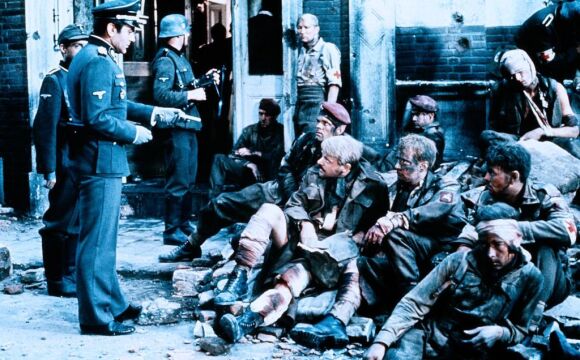
“A Bridge Too Far” is a film that has elicited strong opinions, revealing the complexities of war and the art of cinema. Critics and audiences alike have shared varied perspectives on this ambitious project that reflects on a pivotal moment in history of WW2.
Reviews by Critics and Audiences
Critics gave “A Bridge Too Far” a mixed reception upon its release.
Renowned critic Roger Ebert commented on the grand scale of the production, noting its ambition but also pointing out that the film might have benefitted from even more financial investment.
Despite such criticisms, the film has also been commended for its accurate depiction of the frustrations and futility experienced during Operation Market Garden.
This sentiment is mirrored by audiences who often highlight the film’s narrative ambition, historical significance, and stellar cast.
The ratings reflect this division, showcasing a range of responses from high praise to average scores.
Impact on War Cinema
“A Bridge Too Far” has had a significant impact on the genre of war cinema, particularly in its scale as a war epic.
The film laid a foundation for future war dramas, advancing the genre by offering a more expansive and ensemble-driven approach.
Its storytelling, attention to detail, and broad scope have influenced how subsequent war epics portray both the heroism and the horror of battle.
The drama encapsulated within the unfolding events of World War II continues to set a precedent in the portrayal of conflict on the silver screen, demonstrating a recipe that can captivate audience emotions and provoke critical thought.
Comparative Analysis
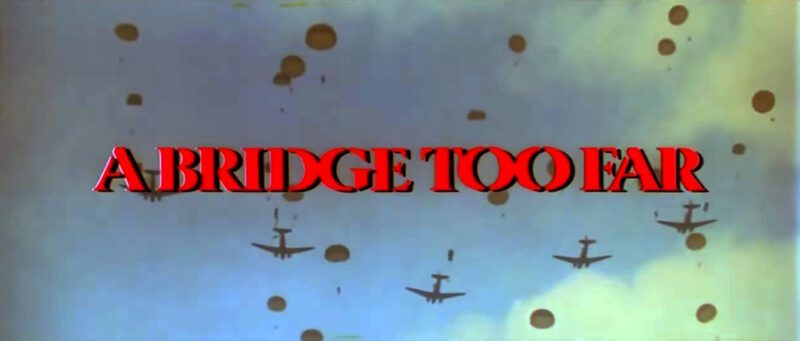
In my examination of “A Bridge Too Far,” I’ll precisely evaluate its standing among war films and draw contrasts with its contemporaries. My focus will encapsulate its production level and narrative in comparison to other renowned war movies.
A Bridge Too Far in the War Movie Pantheon
“A Bridge Too Far” has long been identified as a substantial endeavor in the war movie genre.
Despite possessing characteristics that could peg it as a B-Grade War Movie, such as its ensemble cast approach and operational focus, I find that it elevates itself through meticulous attention to historical detail and an ambitious scope.
In comparison to epics like “The Longest Day”, which focuses on D-Day, it is clear that “A Bridge Too Far” represents a gritty and realistic portrayal of the Operation Market Garden campaign, a pivotal yet less glorified Allied operation during World War II.
Contemporary War Films
When put side by side with contemporary war films, “A Bridge Too Far” stands out for its commitment to a documentary-style narrative.
Movies like “Saving Private Ryan” are often hailed for their graphical portrayal of conflict, especially the American perspective.
As an American and British co-production, “A Bridge Too Far” pioneers a different approach. It leans less on the dramatization of combat and more on the strategic and human complexities of war. It’s not just a display of valor or horror but a nuanced exploration of military ambition versus reality.
Thematic Exploration
In reviewing “A Bridge Too Far,” I find that the movie’s thematic core delves into the harrowing nature of warfare and its impact on human experience, while also critically examining the intricacies of military strategy.
War and Human Experience
The film “A Bridge Too Far” offers an intimate portrayal of War and its profound effects on those involved. It captures the Human Experience of combat, reflecting the Futility and Frustration felt by the Troops.
Depiction of Military Strategy
“A Bridge Too Far” meticulously depicts the Military Operation known as Operation Market Garden, highlighting the complexity of Military Strategy.
I observe that the film scrutinizes the ambitions and decisions of high-ranking officials, juxtaposing them with the ground reality faced by soldiers.
This contrast lays bare the challenges inherent in coordinating large-scale maneuvers and the sometimes devastating consequences of strategic missteps.
Frequently Asked Questions
In this section, I’ll address some of the common inquiries regarding ‘A Bridge Too Far,’ shedding light on its historical accuracy, thematic elements, character development, and critical reception, as well as its contribution to the war film genre and the role of production design and cinematography.
What is the historical accuracy of ‘A Bridge Too Far’?
‘A Bridge Too Far’ is applauded for its attention to historical detail, portraying the events of Operation Market Garden, the ambitious but ultimately failed Allied attempt to secure key bridges in the Netherlands during World War II.
While the portrayal is largely precise, some dramatic liberties were taken for narrative cohesion.
What are the main themes depicted in ‘A Bridge Too Far’?
The film delves into themes such as the complexity of warfare, the human cost of military ambitions, and the chaos of battle.
It depicts the high stakes and unpredictability of war, emphasizing both strategic misjudgments and individual heroism.
How does ‘A Bridge Too Far’ portray its characters and their development?
Character portrayal in ‘A Bridge Too Far’ reveals individuals caught in the vast machinery of war.
Due to the ensemble cast and the sheer scale of the story, the character development varies, with some figures given more substantial arcs, while others serve the broader depiction of the historical operation.
What has been the critical reception of ‘A Bridge Too Far’ since its release?
Since its release, ‘A Bridge Too Far’ has experienced a mixed but generally positive reception.
Critics have praised its ambition and production value, although some have noted that its adherence to detail might overshadow character depth and storytelling.
What role does ‘A Bridge Too Far’ play in the genre of war films?
‘A Bridge Too Far’ stands as a significant entry in the war film genre, maintaining a legacy of ambitious, large-scale productions.
It follows a tradition of WW2 epics, presenting an all-star cast and a meticulous re-staging of historical events, which aids in immersing the audience in the military operation’s vast scope.
How do the production design and cinematography contribute to the film’s overall impact?
The production design and cinematography in ‘A Bridge Too Far’ are integral to its impact. They bring authenticity to the portrayal of Operation Market Garden and deliver a gripping sense of scale and realism that complements the film’s storytelling.
Where can I watch the movie?
Watch the full movie here:


